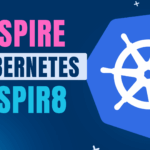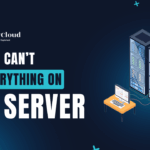- Home
- Articles
- Fundamentals
- Getting started: Distributed Systems
Getting started: Distributed Systems
Welcome to IggyCloud
Have you ever wondered how apps like YouTube, Netflix, or Instagram handle millions of users at once without crashing? The answer is distributed systems. These systems are like teams of computers working together to get things done — faster, safer, and more reliably.
At IggyCloud, I want to make these complex topics easier to understand. My goal is to help you learn how modern systems are built and how you can build them too.
What Are Distributed Systems?
A distributed system is a group of computers that work together as if they were one. Unlike a single server, a distributed system spreads the work across many machines. This gives it big advantages:
-
Scalability – It can handle more users and more traffic.
-
Fault Tolerance – If one machine fails, others keep things running.
-
Global Access – Users around the world can get fast access to your app.
Why a Single Server Isn’t Enough
You might wonder — why not just use a very powerful server? Well, every machine has physical limits:
-
RAM (Memory): Even high-end servers have limits, often 1-2 TB of RAM. That’s not enough for big data processing or caching millions of active sessions.
-
CPU (Processing Power): A CPU can only handle so many tasks per second. If too many users hit the server at once, it becomes slow or crashes.
-
Disk: Disks get slower as they fill up, and large datasets take longer to read and write.
-
Network Bandwidth: A single machine has limited upload/download speed. At some point, it just can’t send or receive data fast enough.
No matter how powerful your server is, eventually you hit a wall. That’s when you need to scale out — by using multiple machines — instead of just scaling up.
Who Uses Distributed Systems Today?
Most big companies you know rely heavily on distributed systems. Here are a few examples:
-
Google: Handles billions of searches daily. Their infrastructure runs on thousands of machines across data centers all over the world.
-
Facebook (Meta): Every post, like, comment, and video runs through distributed services. Their systems handle data from over 3 billion users.
-
Amazon: Every product search, recommendation, and order goes through a complex set of distributed systems, including microservices and message queues.
-
Netflix: Streams content to millions of users at once, using systems like Cassandra (for data), Kafka (for messaging), and hundreds of microservices.
-
YouTube: Handles over 500 hours of video uploaded every minute. Their video delivery and recommendation engines run across massive distributed platforms.
These companies couldn’t function with just one or two servers — they rely on smart system design to stay fast and reliable at a global scale.
My First Experience: Project Ubiquitous
I first got into distributed systems while working on a project called Ubiquitous. Back then, these systems were becoming more popular, and I was curious how they worked. Once I saw how machines could work together to solve hard problems, I was hooked. That experience got me really excited about distributed systems — and it’s what inspired me to start IggyCloud.

What’s on the IggyCloud Horizon?
Over the next weeks, we’ll be unraveling core distributed systems concepts with real-world examples, all through the lens of .NET and cloud technologies. Get ready to dive into:
-
Microservices Architecture: Design modular, independently deployable services.
-
CAP Theorem: Understand the trade-offs between consistency, availability, and partition tolerance.
-
Message Queues (RabbitMQ, Kafka): Build asynchronous communication patterns.
-
Cloud-Native Databases (Cosmos DB, Cassandra): Choose the right database for your distributed needs.
-
Hands-on .NET Examples: See how to implement these concepts using C# and cloud platforms like Azure and AWS.
Join the IggyCloud community and level up your distributed systems skills! Follow us for regular updates and share your questions using #IggyCloud #DistributedSystems #CloudComputing #dotnet






